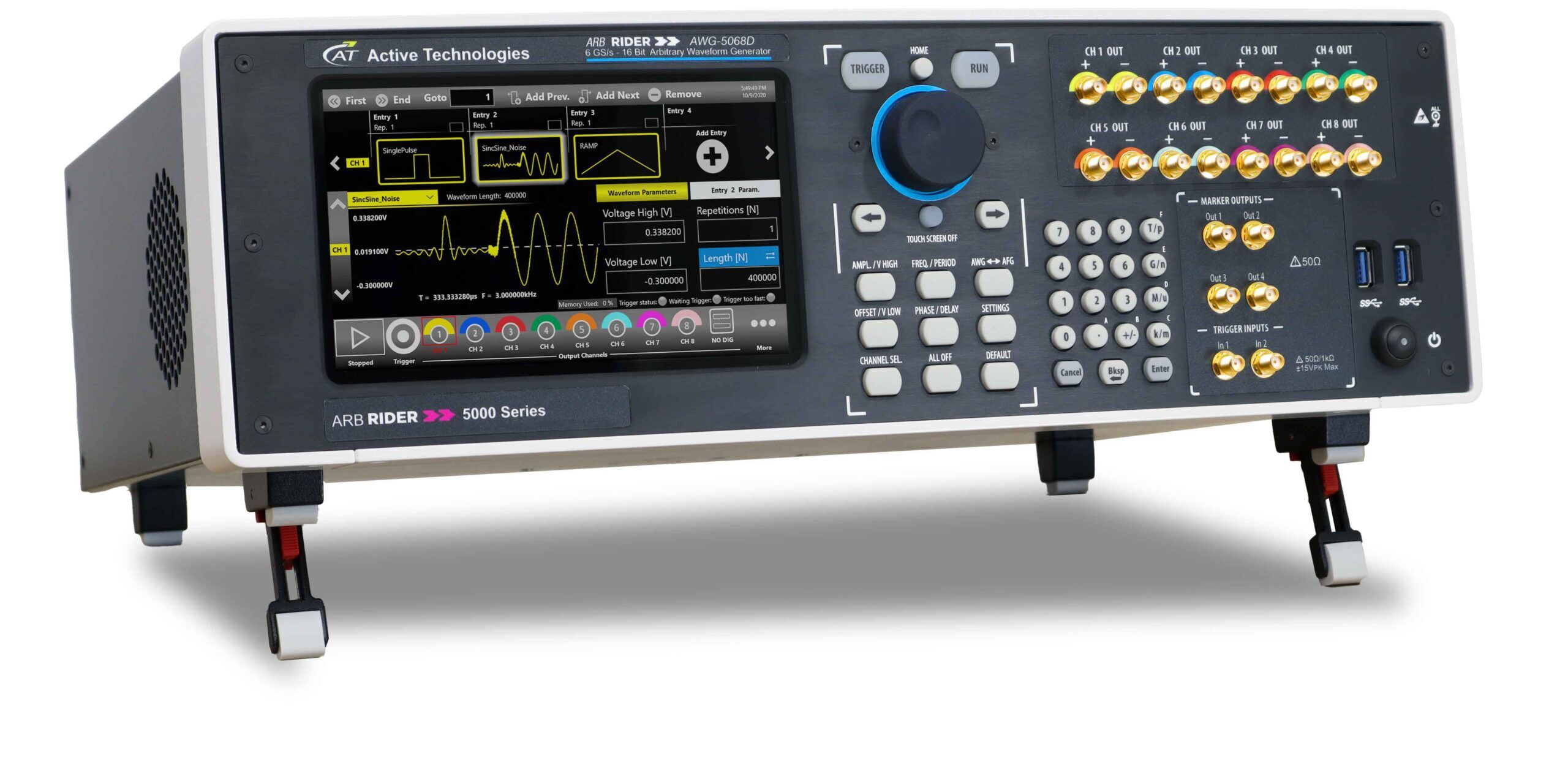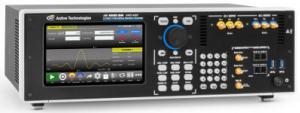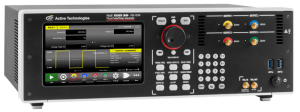Arbitrary Waveform Generator (AWG) and
Pulse Pattern Generator (PPG)
2, 4 and 8 Channel Arbitrary Waveform Generator and Pulse Pattern Generator solutions are ideal choice in automated test benches, for physics experiments, semiconductor tests, analog and digital debugging.
Multiple units can be synchronized to build:
- 8 channel
- 16 channel
- 32 channel
arbitrary waveform generator and / or Pulse Pattern Generator sources.
Such kind of equipments may generate stimulus to test devices like amplifiers, RF receivers, serial and parallel buses.
In the case an engineer needs to characterize a new device, but the complete system is not available for the test, a signal generator can emulate the presence of the real system.
Let’s assume an electronic engineer is going to develop a new sensor amplifier for a large physic experiement (i.e sensor amplifier for particle accelerator).
Once the amplifier protoye is ready, the engineer cannot test it connecting the accelerator as a source, because it means stop the experiment. In such case and Arbitrary Waveform Generator or a Pulse Pattern Generator can be used to emulate the accelerator sensor signals.

In addition Active Technologies Arbitrary Waveform Generators can be used also as Pulse Generators delivering fast rise time, adjustable amplitude and programmable offset. Most common applications are in the field of nuclear Physics, Defence Electronics and Radar emulation.
Signal Generators – Key Features
- Arbitray Waveform Generators (AWG) and Pulse Pattern Generators (PPG)
- Generate Analog and Digital signals
- Create and reproduce Real-World signals
- Advanceded Research, Quantum Computing, RF and Wireless signals, Aerospace & Defense, Automotive, Educational and many more applications
- Multi-Instrument synchronization to increase the number of channels
- Easy to use software Interface
What does a signal generator do?
It is a T&M instrument able to generate signals that allows testing electronic devices. They are the ideal tools for device characterization, compliance and measurements tests and real world signal replication.
What are the types of signal generator?
There are three main signal generator categories: Arbitrary Function Generators, Arbitrary Waveform Generators and Pulse Pattern Generators.
What is the best signal generator?
It depends on the application that you need to test. Typically Arbitrary Function Generators offers simplicity and fast setup time, but limited performance, while Arbitrary Waveform Generators offer more powerful performance but they take more time to be programmed. Finally Pulse Pattern Generators are designed to generate digital patterns and emulate communication protocols or test electronic components.
What is the difference between arbitrary waveform generator and function generator?
The Arbitrary Waveform Generators are sophisticated playback systems that creates signals based on stored digitala data. The AWG’s ability is to create virtually any type of waveform with high precision and accuracy. The Arbitrary Function Generator is based on DDS (Direct Digital Synthesis) technique and it produces the most common test signals used in laboratories and design departments. The AFG Function Generator delivers excellent frequency agility and modulation.
What is a signal generator used for?
The signal generators are used to test electronic devices and systems. They are the reference instrumentation family for applications that require the reproduction of real life signals such as Quantum Computing, RF and Wireless applications, IQ modulation, radar and lidar testing, semiconductor test, advance research in electronic, chemistry and physics, aerospace and defense applications.
What are types of signal generator?
They are: AFG Arbitrary Function Generators, AWG Arbitrary Waveform Generators, DPG Digital Pattern Generators, SPG Serial Data Pattern Generators, Pulse Generators and Pulse Pattern Generators.





